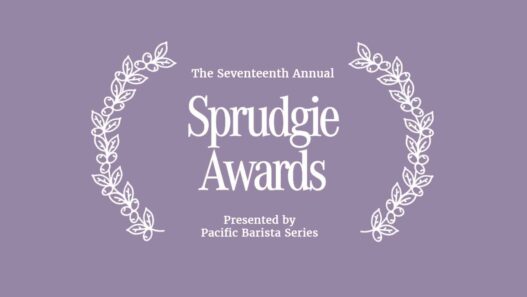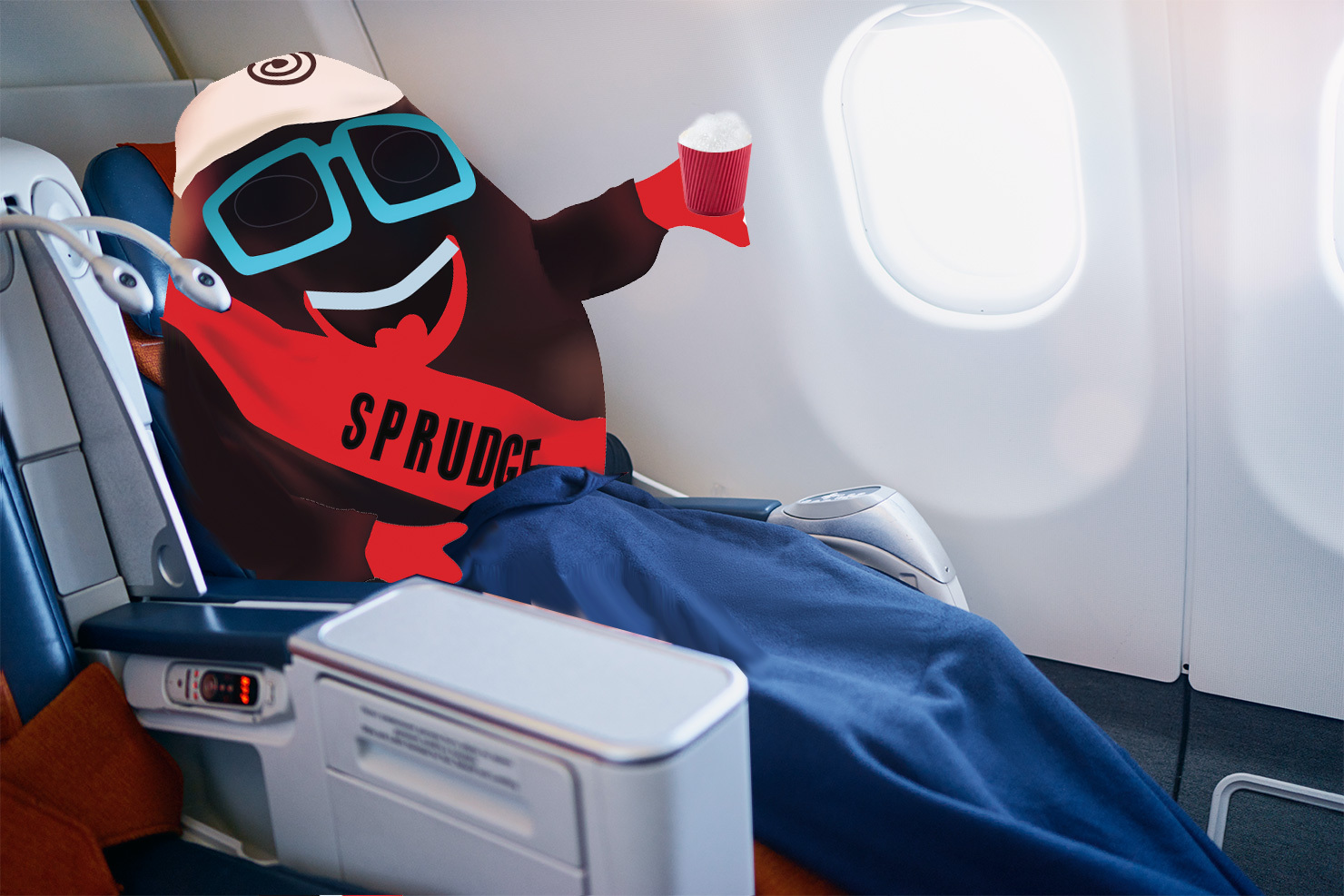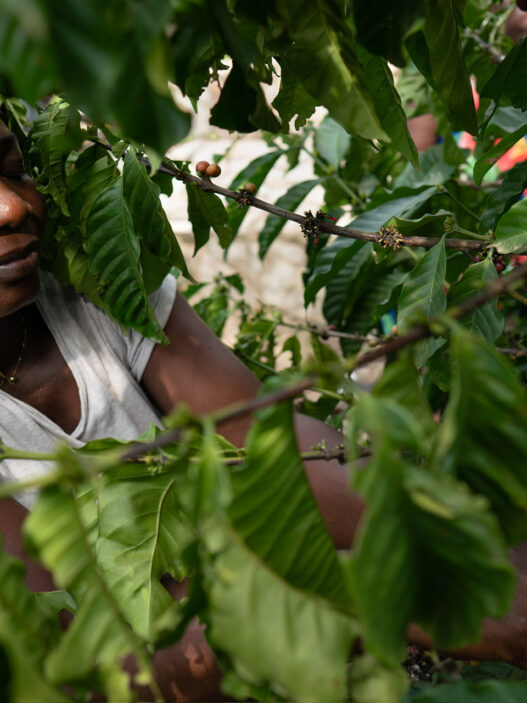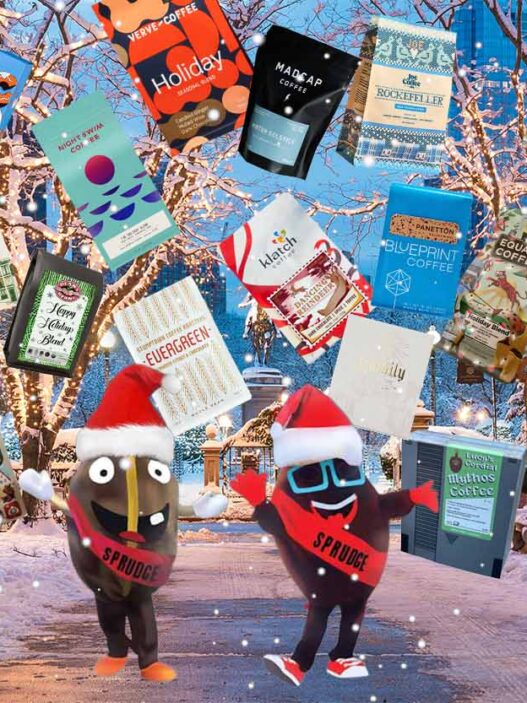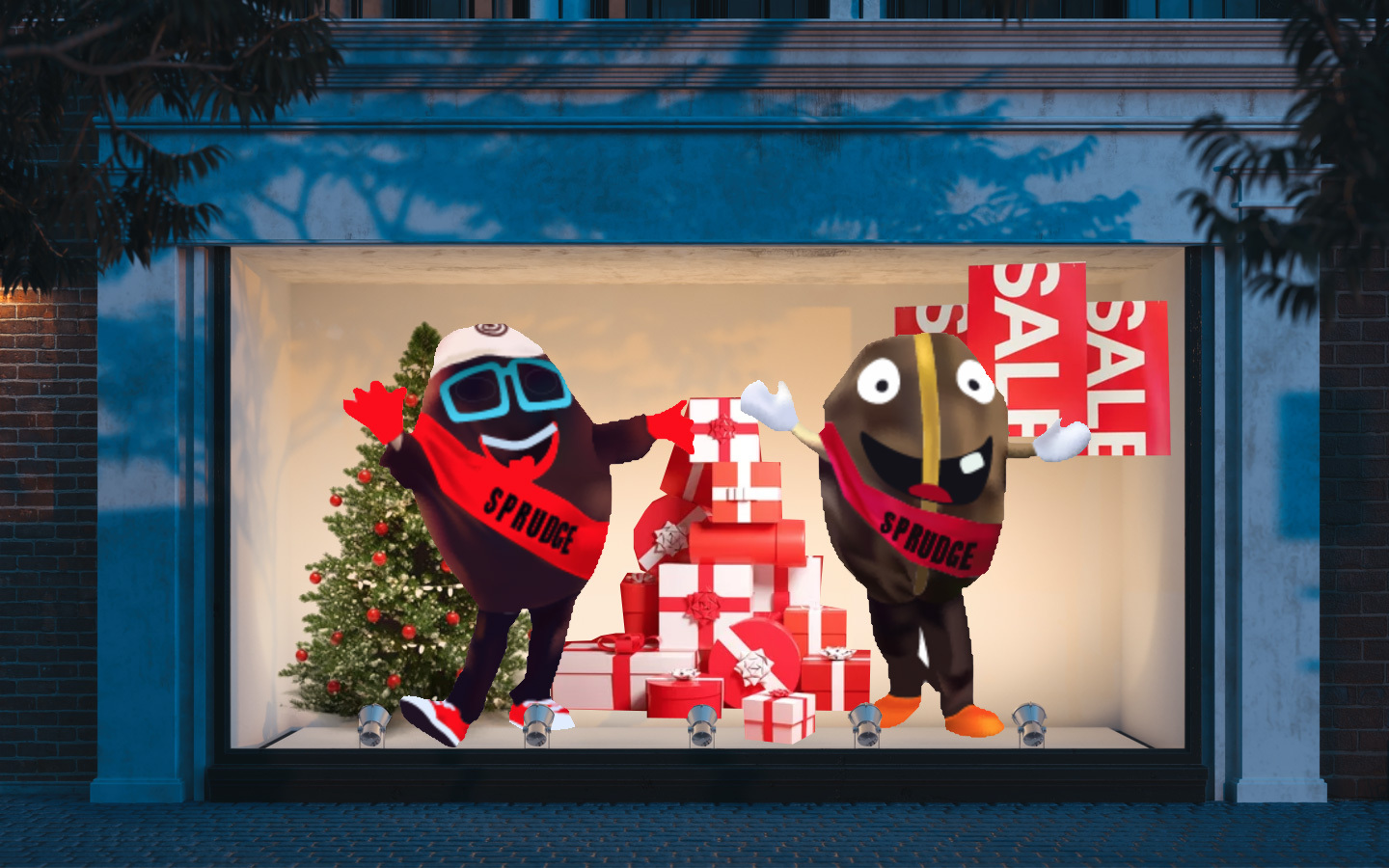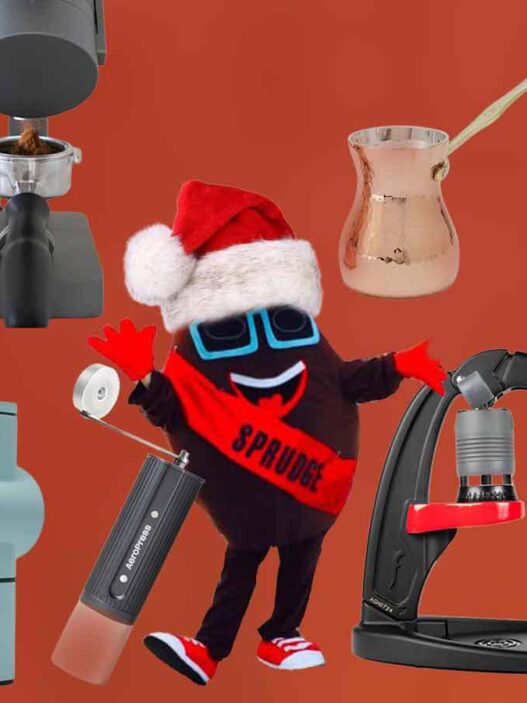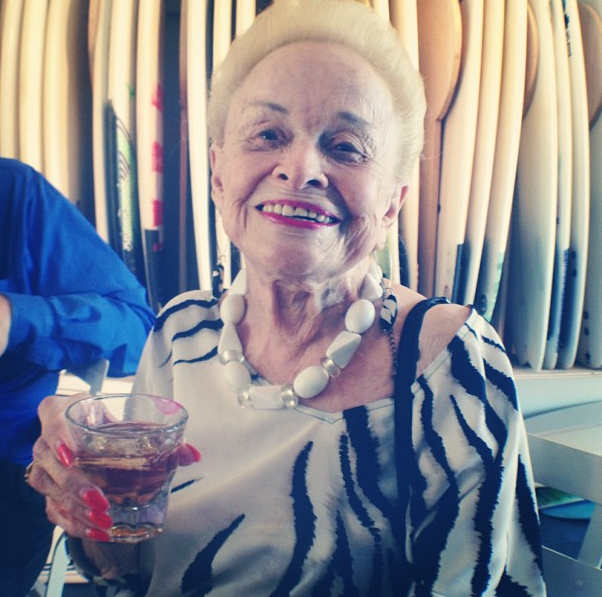
Our lives, all of them, are lived in versions. I have a version of my life, my parents have another, my siblings another, and for every person I count as a friend or acquaintance, there are yet more versions of my life. This is not news to anyone. Famous people famously have many biographies written about them, many different versions of who they were and what they did or didn’t do.
Erna Knutsen was not a famous person, generally. She was a famous person, specifically. The regular world, the world that is not engrossed and consumed by, obsessed and beset by coffee, that world may not know who Erna Knutsen was. The coffee world—and not just the specialty coffee world—knows who Erna Knutsen was, though we may not agree on any one version of her story. But I think we might all agree, or most of us, on a version of the person.
She was generous, if not to a fault, then beyond normal, with her time, knowledge, and understanding. For years before the Specialty Coffee Association of America (now the SCA) hired its first professional staff person, Erna was the unofficial spokesperson for the industry, speaking to reporters about the new fad known as specialty coffee. Perhaps because her story can be understood as something of an underdog story, she loved to see people succeed against the expectations if not the odds; and while she was not at all shy of the spotlight, she was likely to drag someone else into the spotlight with her to share it. She had a guffaw that bordered on a cackle and yet was thoroughly charming because it was so genuine, and often surprising, because if anyone could find humor in unexpected places, it was Erna Knutsen.
“During the discussion after one cupping session, Erna had scored a particular sample much higher than the rest of the jury, so Paul asked her to explain what she liked so much about that coffee. She put on her reading glasses, perused her cupping sheet for a few seconds, then looked up and replied, ‘Oh… I’m sleeping with the farmer!’”
-career coffee professional Stephen Vick, talking about the Cup of Excellence jury in Nicaragua, 2006
I am writing in the past tense because Erna died in June of this year. At 96, she was well past the age when we ask what it was that caused her death. Enough was enough. She had already lived more than one life by any measure and for those of us who claim coffee as a living, it was her second life that meant the most, her coffee life. Erna’s father, Edwin, died just three months before his 100th birthday. Long life was in her blood, is one way to put it. Another way would be to say that long life was in her spirit, and her spirit was needed to launch an industry. To give away the ending, that is what Erna Knutsen did.
Some people will tell you she did this by coining a phrase. Some people will tell you she did this by taking a seat at a table where women were not welcome. Both of these things are true—they really happened—but neither of them sparked a specialty coffee revolution. Erna Knutsen set the fire by reframing the primary transaction within the coffee trade. She understood something so simple to us now; but something that was, for green coffee brokers 50 years ago, like searching for the forest through the trees. Erna saw that green coffee sales could be counted in small bags, not just huge containers. More importantly, she saw the emergence of a roaster class for whom this idea meant something and upon which she could build a business model.
They were known as the “small trade” back then, in the late 60’s, townie and regional roasters who couldn’t buy a container or half a box of coffee at one time, even for a component in their bestselling blend. As far as the coffee traders of the day were concerned, these roasters were anomalies and throwbacks, odd-ducks in a world full of fat geese roasters that ate containers of coffee for breakfast. Shipping anything in containers was only a decade old at that point, but the steel box had quickly become a metric in coffee since the coffee world was dominated by a handful of large roasters—four of whom owned 70% of the market—who thought of margins in fractions of a cent and sometimes in fractions of lost cents.
Erna’s thinking was different.
***
To speak of a “confluence of events” can be dismissive of the components, as if they were all passive players. While it is true that Erna Knutsen first gazed out upon the coffee landscape at a precise and distinct moment in time, ripe for her particular point of view and manner, it might also be true that the moment was made precise and distinct because she was there to take advantage of it.
When Erna took a job as secretary to Bert Fulmer, a partner at importer B.C. Ireland, in 1968, she was 30 years into a long career as a secretary. She’d worked in banks, on Wall Street, and, after moving to San Francisco in the 1950s, for lawyers and even the Vice President of Coffee at the American Molasses Company, where coffee sold to giant roasters failed to capture her imagination. A dozen years later, she was vice president of B.C. Ireland, still a rare thing in business even in 1981, and unheard of in the coffee industry.
B.C. Ireland was established in San Francisco in 1885 and initially focused on spices, herbs, rice, and peanuts. By the turn of the century they were also importing enough coffee to merit a mention as a player by W.H. Ukers in his seminal All About Coffee as he listed San Francisco importers active in 1905. By the 1950s they were listed among the top “non-roasting” coffee importers in the United States in terms of volume. They continued to import herbs and spices, however, and this might be why, in 1981, the name “B.C. Ireland Coffee Company” was established as a business in California.
The registering agent? Erna Knutsen, president.
Erna had not only gone from secretary to vice president of B.C. Ireland, she was to be president of a new entity devoted exclusively to coffee. Four years later, as she told it, she bought the coffee importing company and renamed it Knutsen Coffees, LTD. Erna liked to add that she fired all the men in the process, but she always said it with a smile and a twinkle in her eye. Because if she did fire all the men, it was with cause. In 1985, the year of its 100th anniversary, B.C. Ireland ceased doing business and Knutsen Coffees LTD. was born.
They were all men and they didn’t think women deserved the break. But I fooled them. I bought the company and fired them all. No! Did I? Oh! Oh, no. Yeah. Imagine trying to keep a woman out? Anyway, I learned a lot from them.
-Erna, during her second SCAA award acceptance speech, 2014
This outcome, in 1985, on the brink of her 65th birthday, would have seemed entirely unlikely for most of her life. Or at least up until 1975, when she predicted it would happen.
***
By the time Erna Knutsen arrived at B.C. Ireland, she was in function what we would call an executive assistant today. She’d come a long way from the typing pool at 120 Wall Street in New York, or just taking shorthand, a skill that helped her land her first job at a bank the day after her wedding to her first husband. She was only 18, and got married because, she said, in those days it was “the only way for a girl to get out of the house.”
That was in 1939, and the depression still loomed over the country. A decade or so earlier, in 1926, her family had left Norway to escape one depression, and arrived in American just in time for another. Erna was five. She had never seen an apple, or tasted red sauce. All of her mother’s sauces were white, but their Italian neighbors in a tenement building in Brooklyn used red sauces. Two aromas Erna most associated with her childhood were Italian cooking and coffee being freshly ground and brewed by her mother every morning before sunrise.
“When we moved to New York, she bought coffee once per week from a tall, handsome man with a big top hat who would deliver it fresh-roasted to our house. That man was the grandfather of David Dallis, still in New York and still a small batch roaster.”
-Erna in a 1994 interview with Kevin Sinnott for Tea & Coffee Trade Journal
According to Erna, she was busy as a “housewife in the country” (i.e. the East Bay) when Bert Fulmer of the “coffee Fulmers” asked her to help him out part-time at B.C. Ireland. One of her responsibilities was maintaining the “position book” which kept track of the company’s green coffee. Within the comings and goings of green coffee, she discovered what she would come to call her gems.
Like most lives long-lived, various versions can come from none other than the person who lived it. It’s hard to say at this point exactly how Erna went from part-time secretary to trader specializing in selling “broken lots” of less than a container, gems, to the rare small roasters of the day. But we know a few things with relative certainty, between 1968 and 1973:
• Erna became interested in the small coffee roasters who were being largely ignored by traders at B.C. Ireland at the time.
• Erna saw a way to connect these small roasters to broken lots of coffee.
• Erna tasted the coffees she sold, but understood that to communicate effectively with these roasters, she needed to cup coffee.
• Using the most offensive terms imaginable, some men at B.C. Ireland told Bert Fulmer they would quit if she was allowed into the cupping room.
• Despite this, Bert Fulmer encouraged Erna to continue speaking to small roasters and selling them coffee.
• The first time she bought a full container of coffee, she had to taste the coffee at her desk in a cubicle, sitting next to the exporter. “The boys” roasted and brewed the coffee and brought it to her.
• That first box was Sumatra Mandheling and she sold the entire container in one month, just like she promised Fulmer she would.
In 1973, Erna Knutsen was allowed to take a seat at the cupping table at B.C. Ireland. But Erna’s reputation was established before she entered the cupping room and it was that same year that Tea & Coffee Trade Journal, taking note of this novelty trend of small roasters looking for better coffees, interviewed Erna. It was in that interview that she famously uttered the phrase “specialty coffee.”
***
What was evident when Erna was finally allowed to cup coffee was evident for the next 40 years of her life until she retired in 2013 at age 93. She had a fine palate. Armed with a cupping spoon and a willingness to sell small lots of coffee, the “small trade,” now known as “her” roasters, flocked to Erna and in 1975 she predicted she would buy B.C. Ireland in another 10 years.
That’s another thing about Erna Knutsen: she was true to her word. Erna did not invent travel to origin, but she was among the importers that understood early on in specialty coffee that “boots on the ground” was essential to buying quality coffee. “The way I do business is so personal,” she said. She wanted to look the farmers in the eye the same way she looked her customers in the eye when she made a commitment, perhaps a necessity for a Norwegian. But this need became a hallmark of trading specialty coffee, the ability to say, not only have I tasted the coffees, I’ve been there. Before the emergence of specialty coffee, coffee traders traveled to origin to visit banks and brokers, but not coffee farms.
Forgive the borrowing, but there are also many other things which Erna did. If all written down, they would fill the world. She would be the first to laugh long and hard at the suggestion that she was either savior or saint. But some lives count for something more than most among so many people that we should pause long enough to imagine everything we don’t know about that person, or even the secret things we do know, because the life, the life of Erna Knutsen, was lived in any case worthy of your consideration.
Erna received a lifetime achievement award twice from the Specialty Coffee Association, at ages 73 and 93, something that can only really happen when you outlive expectations. She had played a vital role in the founding of the organization. If you watch the video of Erna accepting her second award in 2014, she is standing next to her business and life partner, John Rapinchuk. If you look closely at the necktie John is wearing, you’ll see it is decorated with small portraits of Erna. If you knew John, who died last year, you know this sort of thing was not atypical of him. But also, if you knew John, you know he adored Erna and that as he tied his tie that day he smiled not only because the tie was a little funny, but because so many people seeing it would understand and share in the true love behind the funny, and that, more than anything else I can say for right now, almost perfectly describes what it was like to know Erna Knutsen.
Mike Ferguson (@aboutferguson) is an American coffee professional and writer based in Atlanta and currently part of the marketing team at Olam Specialty Coffee. Read more Mike Ferguson on Sprudge.
Top photo by Zachary Carlsen for Sprudge Media Network, taken at an Equator Coffees cafe opening in 2013.




